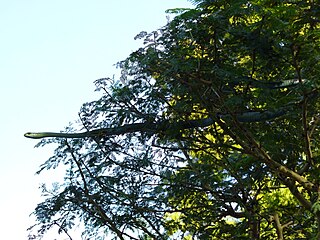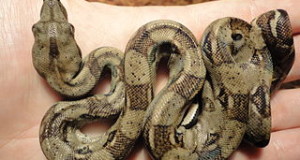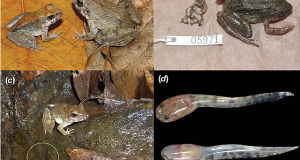In recent years, researchers have found toxins in a wide array of snakes and lizards formerly believed to be harmless…even the Bearded Dragon is not above suspicion (please see below), but venomous pythons? While working at the Bronx Zoo, I was several times called upon to assist in confiscating snakes that had appeared in the pet trade before we learned of their potentially lethal venom (i.e. Asian Watersnakes, genus Rhabdophis). All evidence of toxicity must be taken seriously…bear in mind that both the Boomslang and Savanna Twig Snake were thought to be harmless until each killed a prominent herpetologist! The recent discovery of toxins in the mucus of certain pythons poses a unique and unexpected concern for snakebite victims.
Python Venom
Studies at the University of Queensland have revealed the presence of toxins in the mucus of several python species. Described as “relic venom”, they occur in only trace amounts. In common with many other snakes, pythons may have relied upon venom at some point in their evolutionary history. Although they no longer utilize venom to overcome prey or defend themselves, pythons continue to produce some toxic compounds. While some snakes bear toxins that target specific animals (i.e. Tentacled Snakes, Erpeton tentaculatum, which prey upon fish), python toxins seem to have no use, and pose no danger to people.
The toxin molecules thus far identified in pythons differ from those found in any known venomous snake. Being so chemically unique, they are of great interest to those seeking to develop new chemical compounds and medicines.
Implications for Snakebite Victims
Potential problems arise when a person is bitten by a snake that has not been identified. In such cases, a highly-sensitive venom detection kit is used to determine if toxins are present in the victim. The harmless toxins found in python mucus can trigger a positive response following a python bite, and may result in the unnecessary administration of antivenin (medicines used to counteract snake venom).
In addition to being extremely expensive, antivenin triggers violent allergic reactions in many people. If not treated properly, anaphylactic shock and death can result. Unnecessary treatment also depletes antivenin stocks, which are often difficult to replace. The potential for such problems is greatest in Australia, which is home to a wide variety of both pythons and venomous snakes.
Famous Herpetologists Killed by “Harmless Snakes”
Until rather recently, snakes in the family Colubridae (which contains those “typical snakes” with which most people are familiar) were considered relatively harmless. The family’s venomous members are rear-fanged, and it was believed that their seemingly ineffective venom-delivery systems posed little threat to people.
In 1957, however, world-renowned herpetologist Karl P. Schmidt was bitten by a Boomslang (Dispholidus typus) while working at the Chicago Field Museum. At the time, the Boomslang was not believed to be dangerously-venomous. Unconcerned by the fact that a single fang had punctured his thumb, Mr. Schmidt took notes on his symptoms and did not seek medical treatment. He expired the next day. By the early 1970’s, several other deaths had been attributed to this African Colubrid.
Another African rear-fanged snake, the Savanna Twig Snake (Thelotornis capensis), took the life of another prominent herpetologist, Robert Mertens, in 1972. Once considered harmless, this species had been implicated in several deaths by 1972. As any snake enthusiast knows, Mr. Mertens’ work is beyond reproach, but for some reason he decided to hand-feed a captive Twig Snake. He succumbed to the resulting bite after a period of three weeks.
Other Dangerous Colubrid Snakes
Fatalities have also been attributed to bites from the Yamakagashi (Rhabdophis tigrinus), a semi-aquatic Japanese snake. I was involved in confiscations of several related species in the late 1980’s and early 1990’s, when they sometimes appeared in US pet stores.
The bites of a number of other “harmless” snakes have caused severe reactions, and all may be capable of causing human fatalities. In fact, the venom of the Blanding’s Treesnake (Boiga blandingi) is as toxic as that of certain cobras. It and related species, such as the Mangrove Snake – a high strung species that I found very difficult to work with in zoo exhibits – should be treated with extreme caution. Other potentially deadly species include Latin America’s Road Guarder (Conophis leneatus) and various Racers in the genera Alsophis and Philodryas.
 That Reptile Blog – Reptile, Amphibian and Exotic Pet Care and Information
That Reptile Blog – Reptile, Amphibian and Exotic Pet Care and Information







Great articles, very informative and fun! Reptiles are simply amazing. The content of the articles is better then most.
Much appreciated; you seem to have an interesting selection of species…I cannot post a link here, unfortunately, but will refer folks over to you when possible. Pl let me know if you need care sheets, etc. best,. frank
Hmm… I know monitors are supposedly venomous, and the colbrid snakes you mentioned, but pythons?
Hi,
Please see the note under “Venom”…venom is present in trace amounts, but is interesting from an evolutionary perspective, and also re it’s confusing effect on the treatment of snakebite victims. Best regards, Frank
Is it possible to purchase adult king snakes to be released in the garden?
Hello,
In the US, most if not all states prohibit such releases, even if the species is native. In any event, controlling pest via released predators – if that is what’s contemplated, is rarely effective for a number of reasons. What are you looking to do/..perhaps there are other options…best, Frank